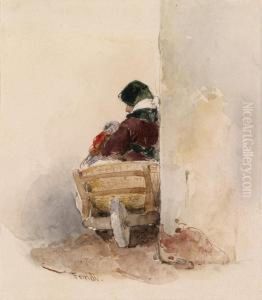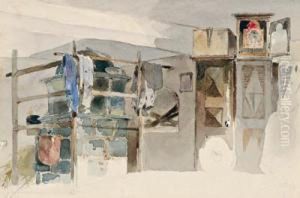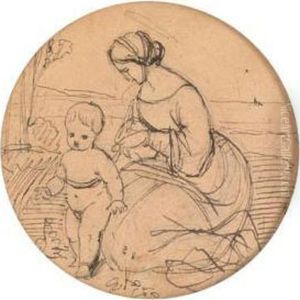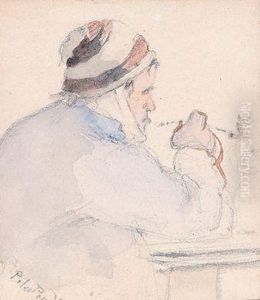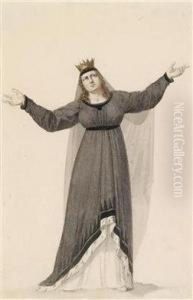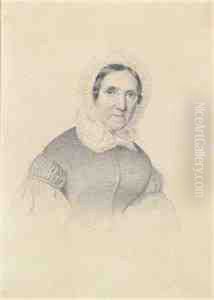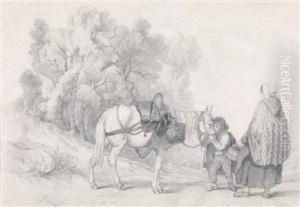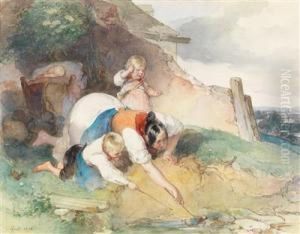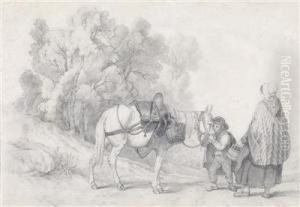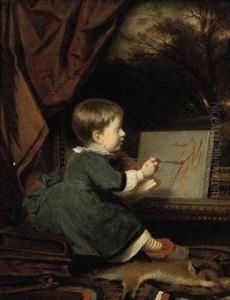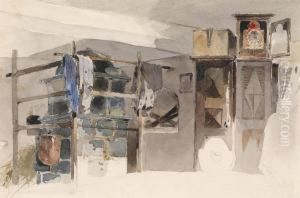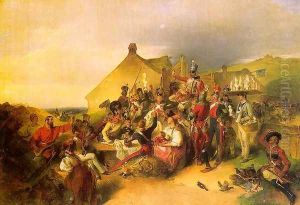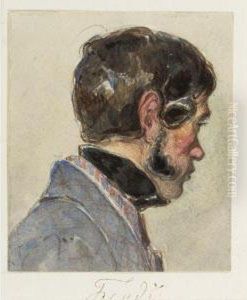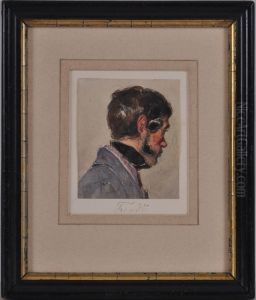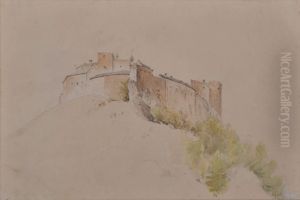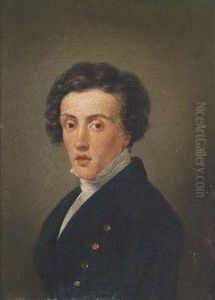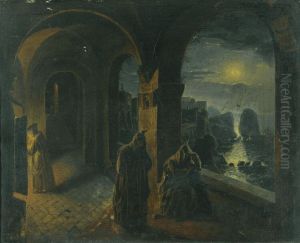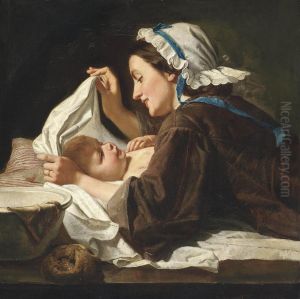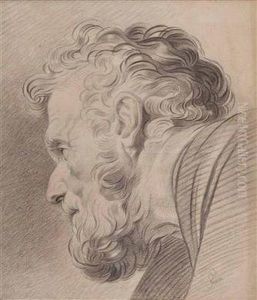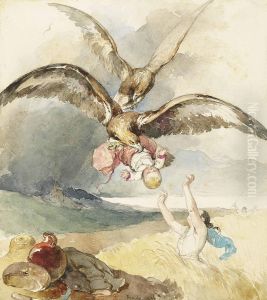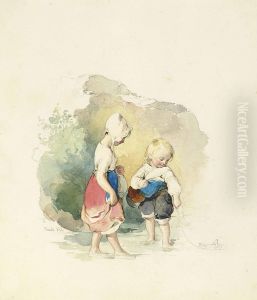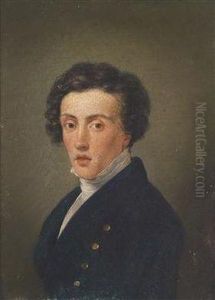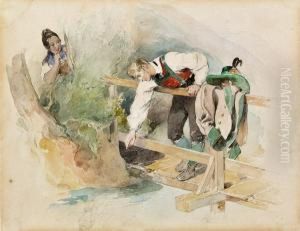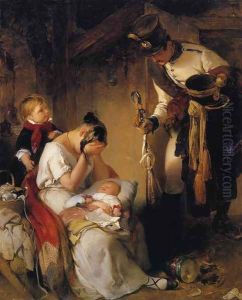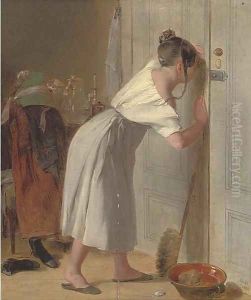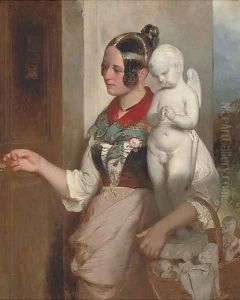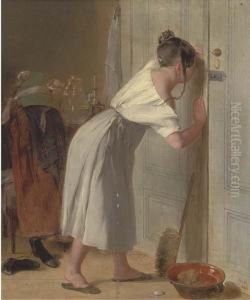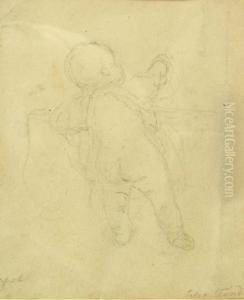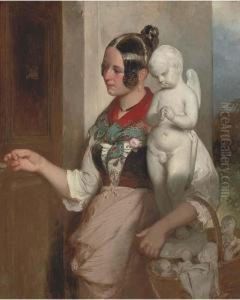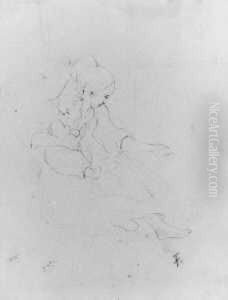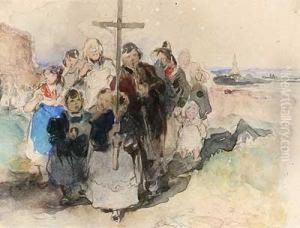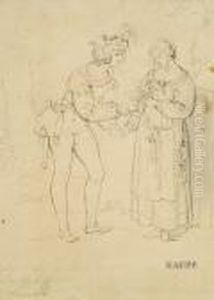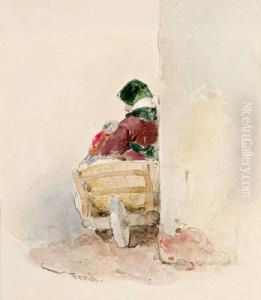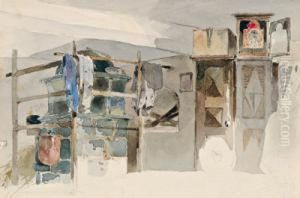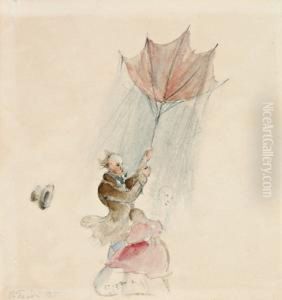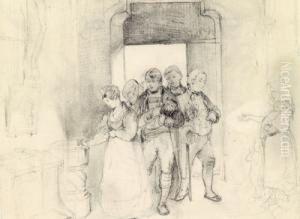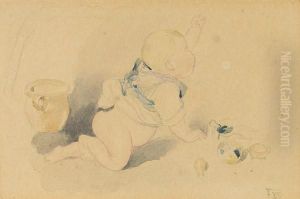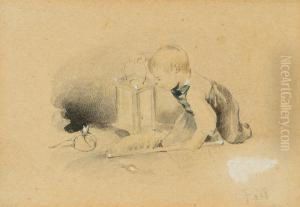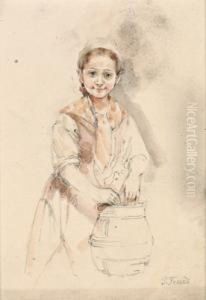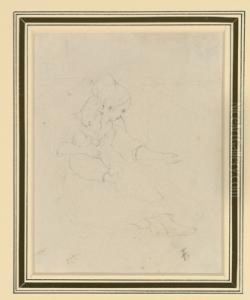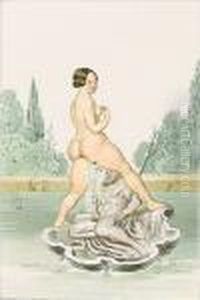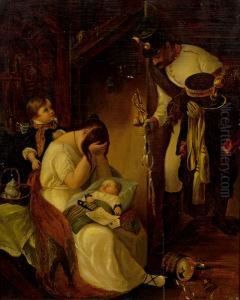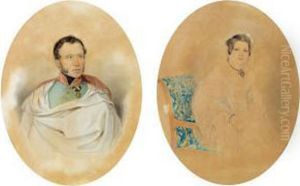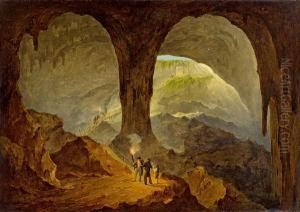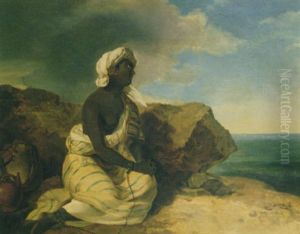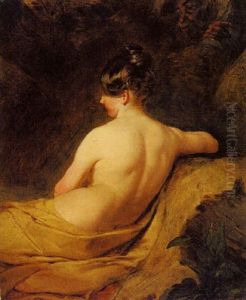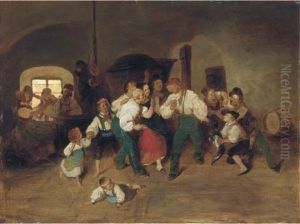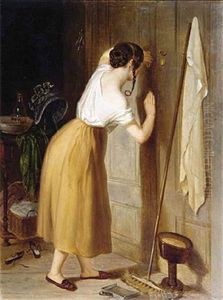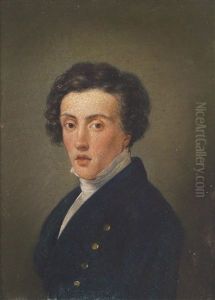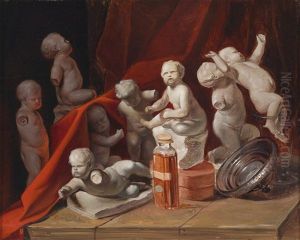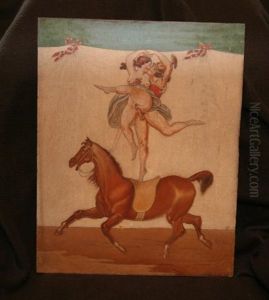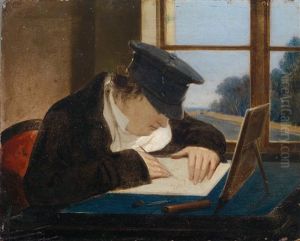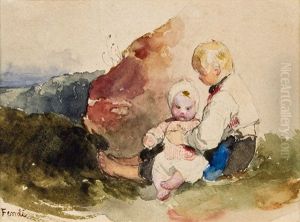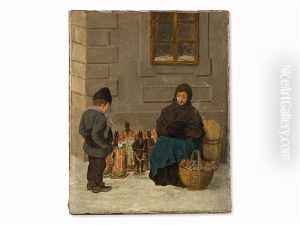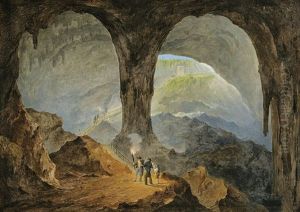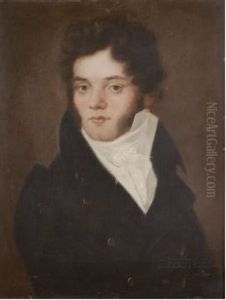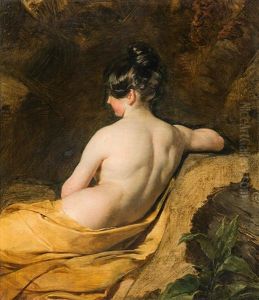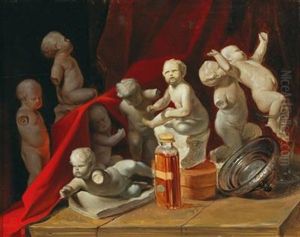Peter Fendi Paintings
Peter Fendi was an Austrian painter, engraver, and lithographer, known for his genre scenes and portraits that reflected the Biedermeier period in Austria, a time characterized by a sense of security and a retreat into domestic privacy. Born on September 4, 1796, in Vienna, Fendi showed an early talent for art, which was encouraged by his father, who was a goldsmith.
Fendi received his initial artistic training at the Academy of Fine Arts Vienna under the tutelage of Johann Baptist von Lampi and Franz Caucig. He was particularly influenced by the Dutch genre painters and the works of the Flemish Baroque period. His early career was marked by his work as a court artist and a member of the Brotherhood of St. Luke. He gained reputation as a portraitist and also for his charming and often gently humorous depictions of everyday life.
In 1834, Fendi was appointed the Custodian of the Imperial Pictures Gallery in Vienna, which gave him access to a vast collection of masterpieces, further influencing his work. During his career, he also taught at the Vienna Academy, where he became a professor in 1841, just a year before his death.
Fendi's art is characterized by its fine detail, vivid coloration, and the engaging expressions of his subjects. His most notable works include watercolors, portraits, and genre scenes that accurately depict the clothing, interiors, and social engagements of the time. Fendi also made significant contributions to the development of lithography in Austria, producing a number of lithographs that were well received for their technical skill and artistic quality.
Tragically, Peter Fendi died at a relatively young age of 45, on August 28, 1842, in Vienna. His work, however, has left a lasting impression on Austrian art, providing a window into the Biedermeier era's culture and society. Fendi's legacy continues to be appreciated by art historians and collectors, and his pieces can be found in museums and private collections around the world.
